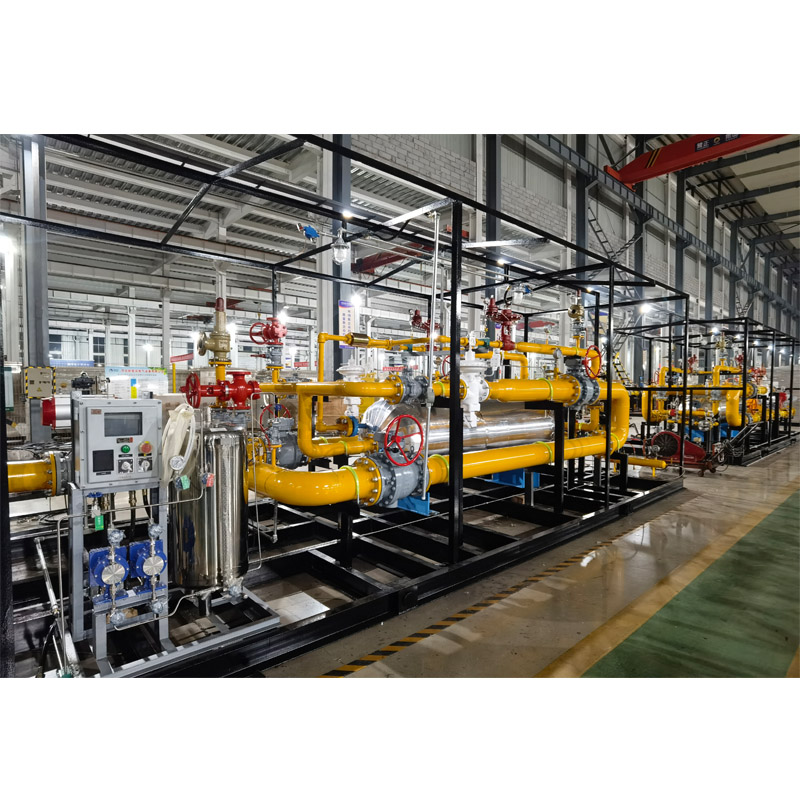
Sep . 09, 2024 08:26
Back to list
gas heat exchanger
Gas Heat Exchangers Essential Components in Energy Efficiency
In today’s world, where energy efficiency and environmental sustainability are paramount, gas heat exchangers have emerged as critical components in various industrial applications. These devices facilitate the transfer of heat between two or more fluids, allowing for significant energy savings and improved system performance. Whether in power generation, HVAC systems, or manufacturing processes, gas heat exchangers play a vital role in optimizing energy use and enhancing operational efficiency.
At its core, a gas heat exchanger operates on the principle of thermal conduction, enabling the transfer of heat from a hot gas to a cooler fluid without the two fluids mixing. This process is crucial in applications such as recovering waste heat from industrial processes or improving the efficiency of combustion systems. By capturing and reusing heat that would otherwise be lost, these exchangers not only reduce energy consumption but also lower greenhouse gas emissions, making them an environmentally friendly choice.
There are several types of gas heat exchangers, each designed for specific applications. The most common types include shell-and-tube heat exchangers, plate heat exchangers, and air-cooled heat exchangers. Shell-and-tube exchangers consist of a series of tubes, with one fluid flowing inside the tubes and another fluid circulating outside, providing efficient heat transfer. Plate heat exchangers use a series of thin plates to maximize surface area while minimizing space, making them ideal for applications where space is limited. Air-cooled heat exchangers utilize ambient air to cool the gas, which is particularly useful in outdoor environments or where water is scarce.
gas heat exchanger

The efficiency of a gas heat exchanger is influenced by several factors, including the design, material, and operating conditions. The choice of materials is crucial, as they must withstand high temperatures and corrosive environments. Additionally, the design should maximize surface area and minimize resistance to flow to enhance heat transfer efficiency. To ensure optimal performance, regular maintenance and cleaning are necessary, as fouling can significantly reduce efficiency.
In recent years, advancements in technology have led to the development of more efficient and compact heat exchangers. Innovations such as enhanced surface geometries, improved materials, and advanced manufacturing techniques have allowed for greater heat transfer rates and reduced pressure drop. These developments not only improve the performance of gas heat exchangers but also contribute to the overall efficiency of the systems in which they are integrated.
Beyond energy savings, the use of gas heat exchangers can also lead to significant cost reductions for businesses. By recovering waste heat and improving overall system efficiency, companies can decrease their energy bills while also extending the lifespan of their equipment. Moreover, as regulations regarding emissions become more stringent, the adoption of gas heat exchangers will likely be a key strategy for industries striving to meet environmental standards.
In conclusion, gas heat exchangers are integral to maximizing energy efficiency and sustainability across various industries. With their ability to recover and reuse waste heat, they not only enhance operational performance but also contribute positively to the environment. As technology continues to evolve, the role of gas heat exchangers is expected to expand, making them indispensable in the quest for a more energy-efficient future.
Latest news
-
Safety Valve Spring-Loaded Design Overpressure ProtectionNewsJul.25,2025
-
Precision Voltage Regulator AC5 Accuracy Grade PerformanceNewsJul.25,2025
-
Natural Gas Pressure Regulating Skid Industrial Pipeline ApplicationsNewsJul.25,2025
-
Natural Gas Filter Stainless Steel Mesh Element DesignNewsJul.25,2025
-
Gas Pressure Regulator Valve Direct-Acting Spring-Loaded DesignNewsJul.25,2025
-
Decompression Equipment Multi-Stage Heat Exchange System DesignNewsJul.25,2025

